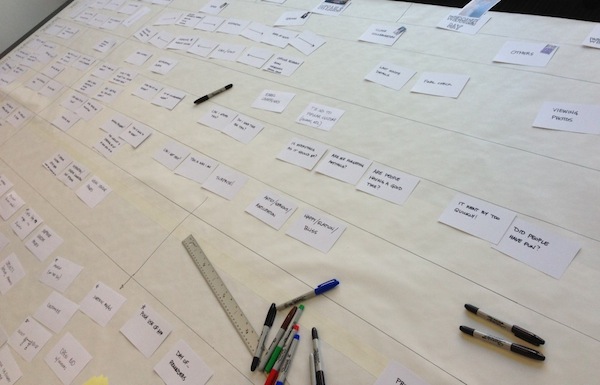I remember the day well. I was sitting on a panel at Boulder Startup Week 2012, chatting about our UX/UI process, when an audience member raised her hand. “Wait a second,” she said, “it sounds like it costs a lot of money to use agencies like you. Do you work with grassroots start-ups?”
“No, we work with funded start-ups,” was my reply. And just like that, I saw the lights shut off for half the audience. My company, Slice of Lime, has been part of the start-up DNA in Boulder and Denver for the past 13 years. We’ve been a part of Boulder Startup Week, Denver Startup Week, Startup Weekend, TechStars, and other events as sponsors, speakers, workshop facilitators, and mentors. The thing is, as we’ve grown as a company, we’ve also grown our UX/UI process and our average project budget and timeline.
A disconnect emerged between the cost of our services and the early stage start-ups that we love so much, so we decided to try an experiment. What if we offered a condensed version of our process—say four weeks—and focused on just a couple of key pages of a client’s web project? Would this be of value to smaller start-ups?
Almost immediately after asking this question, a company called LikeFolio reached out. They had an idea to make investing “social.” They wanted to test the idea as a prototype without investing in our full services upfront. We pitched them our four-week “Rapid Prototype” service and got to work the next week.
Sketches are a great way to engage the client because they are rough and can be torn up or erased
Four weeks doesn’t allow for a lot of client interviews and research, so we conducted in-house and friend/family interviews to get a sense of people’s feelings around trading stocks online. We also checked out other stock related websites as well as social visualization sites like Vizify. This work gave us a surprising amount of valuable input in just a few days.
To get ideas in front of LikeFolio quickly, we started with simple sketches. We’ve found that sketches are a great way to engage the client, simply because they are rough and can be torn up or erased. Clients find it easy to pick up a marker and write on top of our sketches. Using this technique, we explored different ways to visualize social stock information in a way that was fun and engaging for a novice investor.
Sketches were eventually turned into high-fidelity wireframes, which helped to more clearly define the functionality and various use-cases of the application.
By week three, we were designing and coding based on the approved wireframes. There was definitely a sense of excitement in the air for both the client and our team. The pace that was demanded by the tight timeframe kept everything feeling electric, and as the designs and code began to take shape, LikeFolio started to see their vision come to life.
Our front-end code used fake stock and social data to mimic what the fully developed application would look like. For the purposes of the prototype, there was no need to tie into a real database yet. That type of work would only take up more of our precious time.
We finished the site in four weeks and passed it off to LikeFolio. They then showed the prototype to TD Ameritrade. TD Ameritrade has now folded LikeFolio into their services to help novice investors get acquainted with stocks and the value of trading. The application has evolved based on user feedback and Slice of Lime has continued to help iterate on the product over the past year.
None of this would have happened if we hadn’t tried our four-week experiment, and LikeFolio turned out to be one our best clients in 2013—experiencing great success following an abbreviated UX/UI process with a limited starting budget.
We’ve since done many more successful Rapid Prototyping projects for our clients. We’ve also started hosting workshops for early stage startups to teach them some quick ways to create rapid prototypes on their own—in less than a day, and for free. As an agency that cares deeply about the vibrant startup culture in Boulder and Denver, its feels great to now have solutions that we can offer our community.
[google_ad:WITHINARTICLE_1_234X60_ALL]








